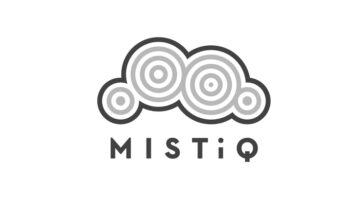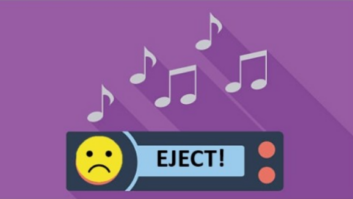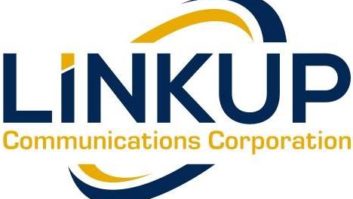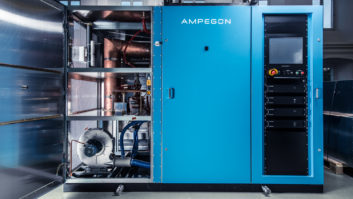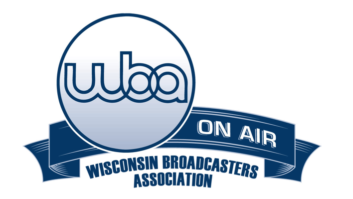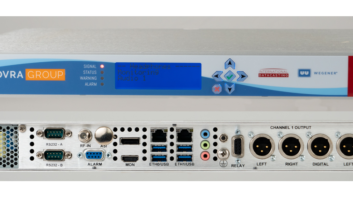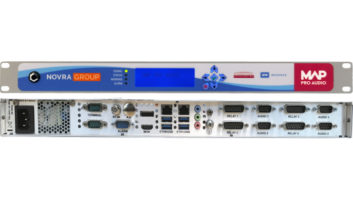Doing More with Datacasting
Aug 1, 2010 1:00 AM, By Jim Roberts
Often, broadcasters will implement RDS for the sole purpose of displaying song title and artist. However, it’s quickly realized that once they’ve captured the listener’s attention visually, showing only basic song data for the duration of every song is throwing away a huge opportunity for marketing the station and better serving listeners and advertisers.
It doesn’t take long before most broadcasters wonder what else they can do with RDS or HD Radio data. Weather, traffic, stocks, sports scores, advertiser phone numbers, these are all excellent ideas. But how do you manage all that data? Most importantly, how do you do it in a way that best serves the listener and without it feeling spammy.
Luckily, there are software solutions to help you manage the data. Let’s look at some of the concepts behind these solutions and some proven techniques for making the best use of the resulting data displays.
Alternating messages through interleaving
Displaying song artist and title data is good, but for the entire duration of every song, this seems like overkill. This is where the concept of interleaving comes in.

Figure 1. Data interleaving example for a 3-minute song. Click to enlarge.
Interleaving is the process of rotating two or more messages at a time. Interleaving allows a station to display program associated data (PAD) such as title and artist, and to display non-PAD data such as programming notes, promotional information, weather and traffic updates, advertiser information and more. Interleaving can do more for a station than any other single data upgrade, and because it’s all managed by software, it can be easy to do. Figure 1 shows how interleaving is applied as a song is played.
Keep in mind that any data strategy beyond scrolling title and artist will require the kind of management tools found only in good datacasting software, software that can synchronize what’s being aired with what’s being displayed. Also, most good datacasting systems will allow some form of date- and time-sensitive message scheduling. More advanced systems work in much the same way that music scheduling software works and even allow categorizing of messages. This opens up the ability to do such things as schedule more traffic information in the morning, more weather data in the afternoon and more sports scores in the evening.
Linking data to audio events
Event linking is another practice that can open up datacasting possibilities for a station. When datacasting software receives event data from the automation system, this data is generally limited; it’s static and usually specific to that cut. Event linking allows that data to become more dynamic by linking alternate or additional text to a specific cut from the automation system. For example, when a Taylor Swift song plays, the data display could read “Taylor Swift in concert this Thursday, tickets still available.” Linking messages to specific cuts allows a station to have more control over what information is displayed for each cut and to frequently update that information with enhanced data.
— continued on page 2
Doing More with Datacasting
Aug 1, 2010 1:00 AM, By Jim Roberts
Third-party data lookups
By using third-party providers, stations are able to look up information in other databases that might be useful for their purposes. In some cases, they may use third-party database lookups to “clean up” text already resident in their automation systems. This is done by comparing portions of the title and artist information, or cut from the automation system with a third-party database that has the information in the format needed for messaging. This can be especially helpful as data is often entered incorrectly or inconsistently. Things like “Mathews_Band, Dave – Ant’s Marching [Radio Edit]” are fairly common in radio automation systems. By executing a data lookup from an outside source, the datacasting system can effectively clean up this data and provide it in a format for broadcast.

Figure 2. Data lookup for song tagging. Click to enlarge.
Another purpose of a third-party data lookup is to provide additional information that the automation system may not contain. This could include album title, concert information or even song or artist trivia. Figure 2 illustrates how lookup works.
Giving listeners the ability to hear a song, tag it and purchase it later helps put radio back in the business of music discovery, a position that is being lost to the Internet and mobile applications such as Shazam.
RDS tagging isn’t much of stretch for most broadcast stations either, thanks to the RT+ standard. RT+ is an open data application (ODA) that is used to identify placement of specific elements within Radio Text, such as news, lottery, stocks, sports and more. The original intent was that RT+ marked data could be buffered by the receiver for display in a specific area on the receiver, such as a studio request number, or at the press of a specific button.
In the case of RDS tagging, compatible devices use RT+ to specifically locate the song title and artist name. This RT+ data is then used by supported devices to find the title and artist data within the RT. This allows the FM listener to earmark their favorite songs playing on the air for purchase later.
Systems for tagging often include the concept of using a third-party data lookup to gather additional song information, such as album information and affiliate IDs required for revenue sharing with music vendors. Software is then used to manage the ODA data.
— continued on page 3
Doing More with Datacasting
Aug 1, 2010 1:00 AM, By Jim Roberts
Expanding to social networks
Once a station has implemented datacasting tools to manage data for RDS, it only makes sense to look into other uses for this data. With the current popularity of sites such as Twitter and Facebook, it’s easy to see the potential of social networking.
Most social networking services offer some sort of application programming interface (API). Several datacasting systems support these APIs. However, because these APIs are public, you can also build your own systems in-house. In addition, services such as Ping.fm and HelloTxt.com will give you access to a single API and, in turn, their service will feed most social networks. These services make it super easy (and free) for a station to push data to multiple social networks at once.
Avoiding the clutter
Once a station starts to implement one or more of these solutions, it quickly becomes apparent that guidelines need to be followed to avoid clutter and keep the listener from feeling like they are being spammed.
Most importantly, a station needs to give each message adequate time to display. No matter how fast a station pumps out data, some displays will move data faster and some move data slowly. To accommodate all of these, a good rule of thumb is to allow a second for each character with a minimum of 30 seconds for each message, no matter how short it is.
Then there is advertising. If we flood our displays with too many ads, they quickly lose their effectiveness and turn listeners away. A good practice is to adopt two types of datacasting ads: high-impact and linked events. A high-impact ad is a message that runs repeatedly throughout the day. Think of a flower shop on Valentine’s Day or a car dealer the day of the big sale. This type of ad should offer a good value to the listener and feel like it’s promoting an event rather than trying to push merchandise. The second kind of ad is a linked event. This is advertising information that is linked to an audio commercial, such as a phone number, website URL or even a coupon code. Because it’s linked to the audio, the listener views it more like additional information than another ad.
With the right tools and concepts, the applications for datacasting are limited only by the imagination. Any station can literally change the face of radio by introducing one or more these techniques when adopting a good datacasting strategy.
Roberts is the product manager for BE’s The Radio Experience, Quincy, IL.
Insight to IBOC 22 – Aug 2010
The Radio magazine DAB Answer series continues with the 22nd installment, which looks inside assymentrical sidebands and data tagging….





